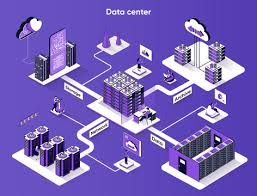
Table of Contents
ToggleIntroduction
Networking has become the backbone of the digital era, enabling communication, data exchange, and connectivity across the globe. The evolution of networking technologies has significantly transformed how individuals, businesses, and governments operate. This article delves into the historical development, current trends, and future prospects of networking, emphasizing its critical role in the modern world.
Historical Development
The concept of NetworkingArchive dates back to the early 1960s with the advent of the ARPANET, a project funded by the U.S. Department of Defense. ARPANET laid the groundwork for the modern Internet by introducing packet switching, a method of data transmission that divides messages into smaller packets for more efficient routing.
In the 1980s, the development of TCP/IP protocols standardized data exchange over the burgeoning Internet. This era also saw the emergence of local area networks (LANs), which facilitated communication within organizations. Ethernet, a widely adopted LAN technology, revolutionized networking by providing high-speed, reliable connectivity.
The 1990s witnessed the commercialization of the Internet, leading to an explosion in online services and the birth of the World Wide Web. The introduction of broadband technologies, such as DSL and cable modems, provided faster Internet access to homes and businesses. Wireless networking technologies, including Wi-Fi, also began to gain traction, offering mobility and convenience.
Current Trends
Today, networking is characterized by several key trends that continue to shape the digital landscape:
1. Internet of Things (IoT)
IoT refers to the interconnection of everyday objects, embedded with sensors and software, to collect and exchange data. This network of devices enhances automation, efficiency, and decision-making across various sectors, including healthcare, agriculture, and smart cities. The proliferation of IoT devices necessitates robust networking infrastructure to handle the vast amounts of data generated.
2. 5G Technology
The rollout of 5G networks promises to revolutionize connectivity with faster speeds, lower latency, and increased capacity. 5G technology supports high-bandwidth applications, such as augmented reality (AR), virtual reality (VR), and autonomous vehicles. It also plays a crucial role in advancing IoT and enabling seamless communication between devices.
3. Cloud Computing
Cloud computing has redefined how data and applications are accessed and managed. Networking plays a vital role in connecting users to cloud services, ensuring reliable and secure data transmission. The adoption of multi-cloud and hybrid cloud strategies necessitates sophisticated networking solutions to integrate diverse environments seamlessly.
4. Network Security
As cyber threats become more sophisticated, network security has become paramount. Technologies such as firewalls, intrusion detection systems, and virtual private networks (VPNs) protect data integrity and privacy. The rise of cybersecurity threats has led to the development of advanced security measures, including zero-trust architecture and artificial intelligence-based threat detection.
5. Software-Defined Networking (SDN)
SDN decouples the control plane from the data plane, allowing network administrators to manage network services through software. This approach enhances network agility, scalability, and efficiency. SDN is particularly beneficial in data centers and large-scale enterprise networks, where dynamic resource allocation is critical.
Future Prospects
The future of networking is poised to witness several groundbreaking advancements:
1. Quantum Networking
Quantum networking leverages the principles of quantum mechanics to enable ultra-secure communication. Quantum key distribution (QKD) ensures that any attempt to intercept data is detectable, providing unprecedented levels of security. While still in its infancy, quantum networking holds the potential to revolutionize data protection and privacy.
2. Edge Computing
Edge computing involves processing data closer to the source, reducing latency and bandwidth usage. This approach is particularly valuable for time-sensitive applications, such as autonomous vehicles and industrial automation. Edge computing complements cloud computing by enabling real-time data analysis and decision-making at the network’s edge.
3. AI-Driven Networks
Artificial intelligence (AI) and machine learning (ML) are increasingly being integrated into networking to enhance performance and security. AI-driven networks can automatically detect and mitigate threats, optimize traffic routing, and predict network failures. This level of automation improves network reliability and efficiency.
Conclusion
Networking has come a long way from its early beginnings, evolving into a complex and indispensable part of modern society. The continuous advancements in networking technologies are driving innovation and transforming how we live and work. As we move forward, the integration of emerging technologies such as 5G, IoT, and AI will further enhance the capabilities and impact of networking, paving the way for a more connected and efficient world.